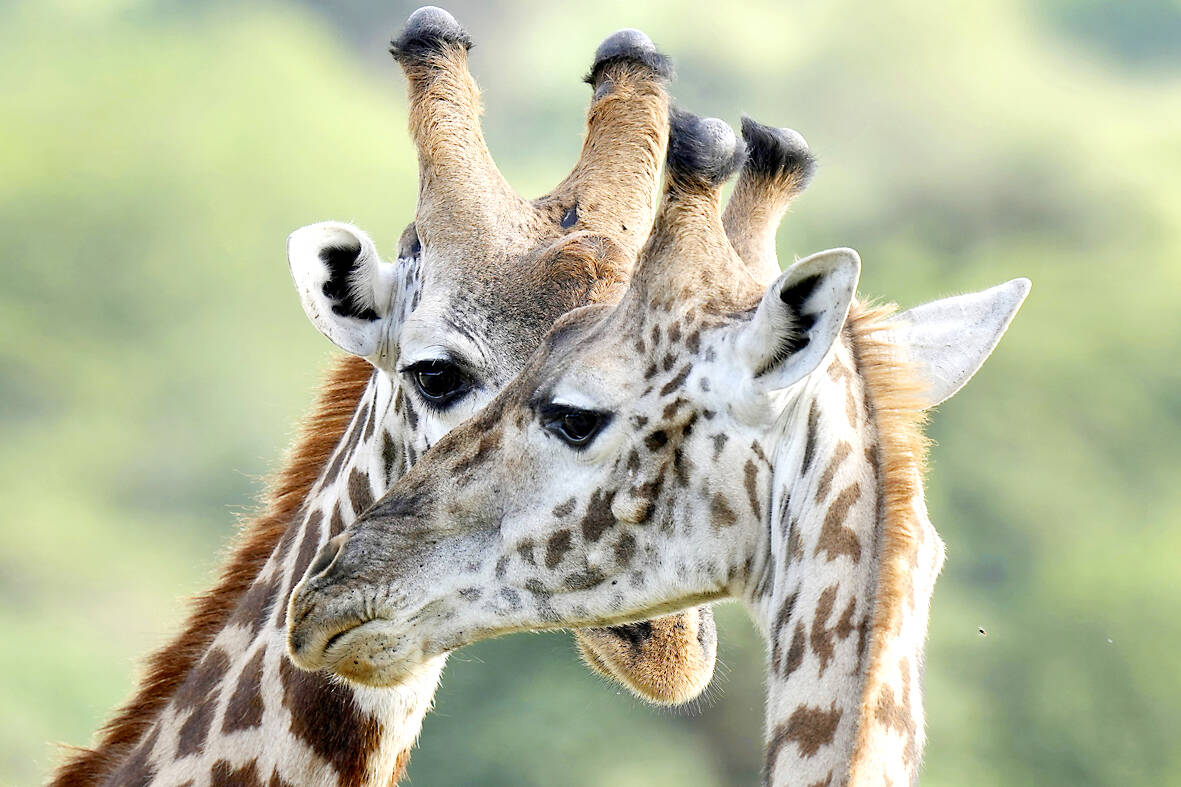A social media post about giraffe conservation has become the latest place for people in China who are unhappy about the economy to vent their frustration, as the Chinese government increasingly cracks down on negative commentary.
On Feb. 2, the US embassy in China posted an update on its Weibo account about tracking giraffes in Namibia using GPS technology. As of Monday afternoon local time, the post had received approximately 166,000 comments, many of them about China’s economic pains.
“Who can help me? I’ve been unemployed for a long time,” wrote one commenter. “I’ve seen a few comments about stocks, will they be deleted?” wrote another.

Photo: AP
Other comments, reported by Bloomberg, included: “If criticisms are not allowed, then praises are meaningless” and negative references to China’s stock market.
Weibo, which has 593 million monthly active users, moderates comments that are posted on the platform.
Threads beneath posts by foreign organizations, such as the US embassy, are a slightly more permissive environment for commenters than those below posts by Chinese state agencies, which often take it upon themselves to ensure that discussions stay within government’s red lines.
Many of the comments on the US embassy’s post appeared to have been scrubbed from the platform as of Monday, or drowned out by comments saying variations on “I love China.”
Chinese authorities are increasingly concerned about gloomy commentary as the economy struggles to rebuild momentum after the lifting of the country’s harsh “zero-COVID” pandemic restrictions. In December, social media influencers were warned against making public comments that would “bad-mouth the economy.”
The restrictions on negative comments have failed to mask the fact that China’s stock market is flailing. The CSI 300 index, which tracks the Shanghai and Shenzhen bourses, tumbled nearly 5 percent last week to a five-year low. On Sunday, the Chinese securities regulatory commission said it would step up market stabilization measures.
The popularity of the US embassy’s post about giraffes prompted giraffe-related comments elsewhere on Weibo. In one since deleted comment, a user wrote: “The giraffe has reached a new high. Even though many comments have been deleted and many likes have been deleted, it has still reached a new high! Weibo administrators and your editors, thank you for your hard work. The holidays keep you so busy.”

June 2 to June 8 Taiwan’s woodcutters believe that if they see even one speck of red in their cooked rice, no matter how small, an accident is going to happen. Peng Chin-tian (彭錦田) swears that this has proven to be true at every stop during his decades-long career in the logging industry. Along with mining, timber harvesting was once considered the most dangerous profession in Taiwan. Not only were mishaps common during all stages of processing, it was difficult to transport the injured to get medical treatment. Many died during the arduous journey. Peng recounts some of his accidents in

“Why does Taiwan identity decline?”a group of researchers lead by University of Nevada political scientist Austin Wang (王宏恩) asked in a recent paper. After all, it is not difficult to explain the rise in Taiwanese identity after the early 1990s. But no model predicted its decline during the 2016-2018 period, they say. After testing various alternative explanations, Wang et al argue that the fall-off in Taiwanese identity during that period is related to voter hedging based on the performance of the Democratic Progressive Party (DPP). Since the DPP is perceived as the guardian of Taiwan identity, when it performs well,

A short walk beneath the dense Amazon canopy, the forest abruptly opens up. Fallen logs are rotting, the trees grow sparser and the temperature rises in places sunlight hits the ground. This is what 24 years of severe drought looks like in the world’s largest rainforest. But this patch of degraded forest, about the size of a soccer field, is a scientific experiment. Launched in 2000 by Brazilian and British scientists, Esecaflor — short for “Forest Drought Study Project” in Portuguese — set out to simulate a future in which the changing climate could deplete the Amazon of rainfall. It is

Artifacts found at archeological sites in France and Spain along the Bay of Biscay shoreline show that humans have been crafting tools from whale bones since more than 20,000 years ago, illustrating anew the resourcefulness of prehistoric people. The tools, primarily hunting implements such as projectile points, were fashioned from the bones of at least five species of large whales, the researchers said. Bones from sperm whales were the most abundant, followed by fin whales, gray whales, right or bowhead whales — two species indistinguishable with the analytical method used in the study — and blue whales. With seafaring capabilities by humans